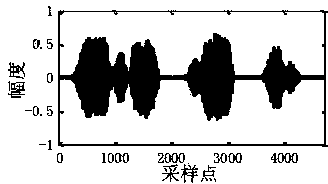Ecological voice recognition method based on multiband signal reconstruction
A signal reconstruction and sound recognition technology, applied in speech recognition, speech analysis, instruments, etc., can solve problems such as poor recognition effect, increased decomposition times, and inability to suppress noise
- Summary
- Abstract
- Description
- Claims
- Application Information
AI Technical Summary
Problems solved by technology
Method used
Image
Examples
Embodiment Construction
[0040] The invention proposes an ecological sound recognition method based on multi-band signal reconstruction, and builds a classification recognition framework based on deep learning. Firstly, the OMP sparse decomposition is used for the first-stage reconstruction to retain the main structure of the foreground sound; secondly, the remaining components of the previous stage decomposition are divided into frequency bands, and the reconstructed signal is adaptively adapted according to the frequency distribution of the foreground sound and background noise Compensation, complete the second stage of reconstruction; finally, extract composite anti-noise features according to the support set atomic time-frequency information and frequency domain information, and use the deep belief network (DBN) to classify and identify ecological sounds in different environments and SNR scenarios . like figure 1 As shown, it specifically includes the following steps:
[0041] S01: Perform OMP s...
PUM
 Login to View More
Login to View More Abstract
Description
Claims
Application Information
 Login to View More
Login to View More - R&D
- Intellectual Property
- Life Sciences
- Materials
- Tech Scout
- Unparalleled Data Quality
- Higher Quality Content
- 60% Fewer Hallucinations
Browse by: Latest US Patents, China's latest patents, Technical Efficacy Thesaurus, Application Domain, Technology Topic, Popular Technical Reports.
© 2025 PatSnap. All rights reserved.Legal|Privacy policy|Modern Slavery Act Transparency Statement|Sitemap|About US| Contact US: help@patsnap.com



